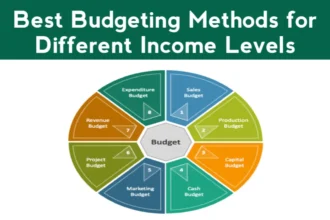Introduction: It’s Not About Cutting Corners, It’s About Spending Wisely
The idea of “reducing expenses” often conjures images of bland meals and a social life on hold. But true financial savvy isn’t about sacrifice—it’s about optimization. It’s redirecting money from things that don’t matter to you toward the things that do. In 2025, with a little strategy, you can absolutely maintain—or even enhance—your quality of life while keeping more of your hard-earned cash.
Here’s how to conduct a smart and painless audit of your monthly spending.
10 Smart Strategies to Lower Your Monthly Bills
1. Conduct a “Subscription Autopsy”
Our digital lives are cluttered with recurring charges for services we forget we have.
- Action: Review your bank and credit card statements from the last 90 days. Cancel any subscription you haven’t used in the last month. This includes streaming services, app memberships, and monthly boxes.
- Pro Tip: Use a free service like Rocket Money or your bank’s subscription-tracking feature to get a full picture. The savings can be startling.
2. Master the “At-Home Café”
The daily coffee and lunch run is a massive budget leak. This isn’t about never eating out, but about making it a treat, not a routine.
- Action: Invest in a good coffee thermos and commit to preparing your lunch 3-4 days a week. Batch-cooking on Sundays makes this effortless.
- The Math: Cutting a ₹200 daily habit saves you ₹4,400 a month—that’s a potential vacation fund right there.
3. Become a “Savings Scientist” with Your Utilities
Small changes in your home efficiency lead to direct savings.
- Action:
- Energy: Switch to LED bulbs, unplug electronics (“vampire power” is real), and use a programmable thermostat.
- Water: Install low-flow showerheads and fix leaky taps.
- Result: These simple actions can easily shave ₹500-₹1000 off your combined utility bills.
4. Implement the 24-Hour “Cooling-Off” Rule
Impulse buys are the enemy of a lean budget. Online shopping makes it dangerously easy.
- Action: For any non-essential purchase over a set amount (e.g., ₹1,000), add it to your cart and walk away for 24 hours. If you still want it after a day, it’s likely a considered purchase. Most of the time, the urge passes.
5. Optimize Your Transportation
Rethink how you get from A to B.
- Action:
- Carpool: Share rides to work or for school runs.
- Public Transit: Calculate the true cost of your car (fuel, maintenance, parking) versus a transit pass.
- Walk/Bike: For short trips, you’ll save money and get free exercise.
6. Harness the Power of Cashback and Rewards
If you’re spending anyway, you might as well get paid for it.
- Action: Use a cashback credit card for your planned expenses (groceries, fuel, bills) and pay it off in full every single month to avoid interest. Combine this with cashback apps for online shopping.
- Caution: This only works with disciplined, debt-free spending.
7. “Shop” Your Own Insurance
Loyalty can be expensive, especially with insurance providers.
- Action: Once a year, get competing quotes for your health, auto, and home insurance. You can often find the same coverage for 10-20% less by switching providers.
8. Embrace the Library and Free Entertainment
Your city is filled with free and low-cost culture.
- Action: Instead of defaulting to a paid movie night, explore free museum days, public parks, library events, or community workshops. You’ll have novel experiences without the novel expense.
9. Practice Mindful Grocery Shopping
The supermarket is designed to make you spend more.
- Action:
- Always go with a list and stick to it.
- Buy in bulk for non-perishable items you use regularly.
- Choose generic/store brands over name brands for staples (the quality is often identical).
10. Negotiate Your Bills
It never hurts to ask. Many service providers would rather give you a discount than lose you as a customer.
- Action: Call your internet, mobile, or cable provider and politely ask, “I’m reviewing my expenses, are there any current promotions or loyalty discounts I qualify for?” A 5-minute call can save you hundreds per year.
Case Study: A Real-Life “Money Makeover”
The Situation: Ankit, a marketing professional, felt his ₹55,000 monthly salary was disappearing without much to show for it.
His 30-Day Plan:
- The Audit: He tracked his spending and found ₹2,500 in unused subscriptions (gym, two streaming services, a gaming subscription).
- The Swap: He started making coffee at home and packing lunch 4 days a week, saving ₹6,000.
- The Optimization: He negotiated a ₹300 discount on his internet bill and switched to an LED bulb in his living room, saving another ₹500.
- The Habit: He implemented the 24-hour rule, which stopped him from making three impulsive online purchases, saving roughly ₹4,000.
The Result: In just one month, Ankit reduced his non-essential spending by over ₹13,000 without feeling deprived. He reallocated that money to his travel fund and debt repayment.
The Bottom Line
Reducing your expenses is a continuous process of aligning your spending with your values. It’s not about living a life of scarcity, but about creating a life of financial intention and freedom. By spending consciously on the things you love and cutting the waste you don’t notice, you fund your future without sacrificing your present.
Ready to start? Your first assignment is the “Subscription Autopsy.” Check your statements now—what’s the first subscription you can cancel?
What’s your most effective money-saving hack? Share your genius with the community in the comments below!









